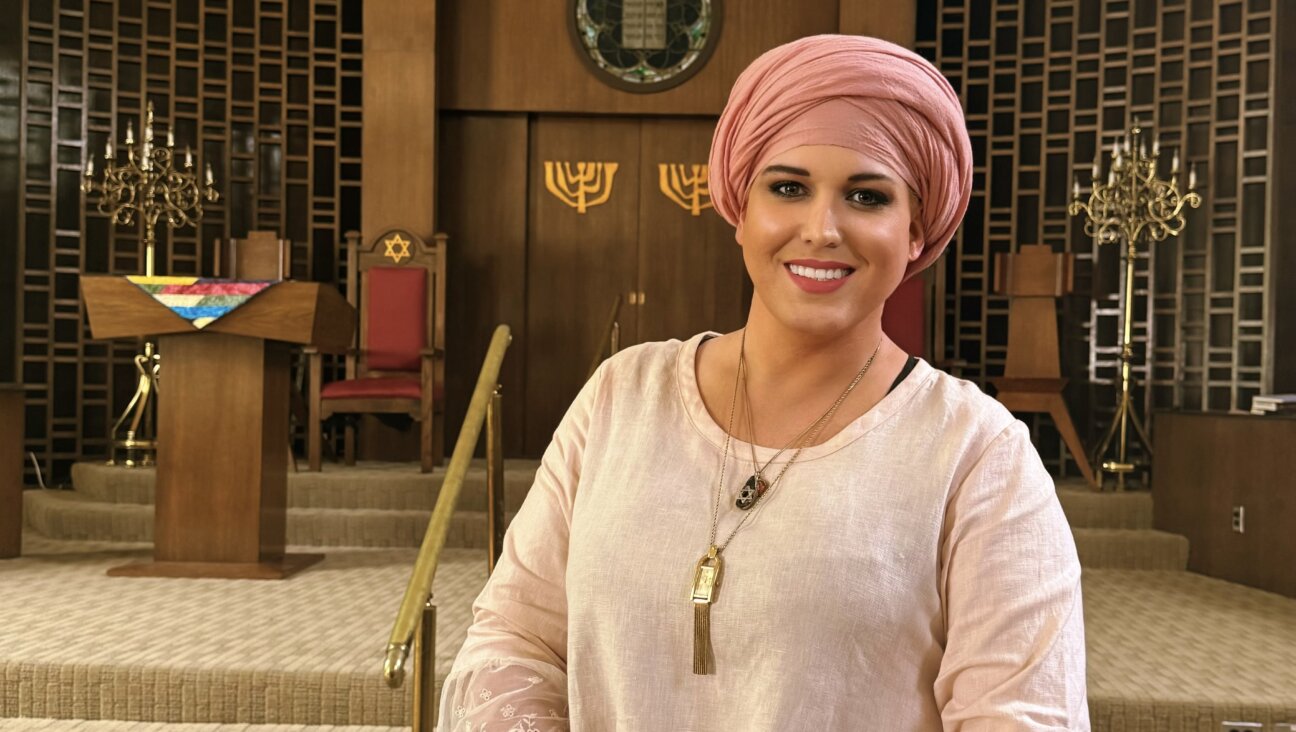How a new generation of labor organizers is using the legacy of the Triangle Shirtwaist factory fire
A long-awaited memorial opens in New York as high-profile unionization campaigns at companies like Amazon and Starbucks stoke interest in labor history

A rendering shows the new memorial, a steel ribbon that spans nine floors of the former Triangle Shirtwaist factory building. Image by Uri Wegner and Richard Joon Yoo
When Starbucks barista Megan DiMotta started organizing a union at her store, she had plenty of present-day grievances to discuss, such as inadequate wages and unsafe working conditions during the pandemic. But to communicate the importance of collective action, she reached back in time — specifically, back to the 1911 Triangle Shirtwaist factory fire.
Talking to a Ukrainian coworker at her store, the first Starbucks location in Brooklyn to formally unionize, DiMotta mentioned Clara Lemlich, a Jewish labor activist born in what is now Ukraine, who led garment workers before and after the fire.
“She was so excited, and so into reading up on the Shirtwaist factory,” DiMotta told me over the phone. “And she’s now one of the lead organizers at our store.”

Now, new union members and budding labor historians will be able to do more than read up. Over a century after the fire killed 146 workers, a new memorial is set to open at the site of the Triangle Shirtwaist factory, now an academic building on the New York University campus. Commemorating an event that has been a touchstone of the labor movement since the day it happened, the memorial arrives as a new generation of activists are leading a “union renaissance” — and drawing on the historic disaster to make the case for organized labor.
“In a moment when more people want to learn about labor and more people want to organize, these issues have become salient again,” said Mary Anne Trasciatti, the director of Hofstra University’s labor studies program and the president of the Remember the Triangle Fire Coalition, the organization that commissioned the memorial.
The Triangle Shirtwaist factory fire was “an object lesson in adequate safety precautions,” employment journalist Steven Greenhouse wrote in his book Beaten Down, Worked Up. Only two years earlier, in 1909, Lemlich led the Uprising of the 20,000, a strike that forced almost all New York City garment factories to recognize and bargain with the International Ladies Garment Workers Union — except for the Triangle Shirtwaist factory, which refused. In the absence of union protections, factory managers often kept doors locked out of fear that workers would steal materials and allowed highly flammable cloth scraps to pile up on the floor. When a fire broke out, workers discovered that the factory’s fire hoses didn’t work.
Photographs of the burned-out building and accounts of workers, mostly Italian and Jewish immigrant women, jumping to their deaths shocked Americans and catalyzed big changes. Frances Perkins, a young anti-sweatshop activist, happened to witness the fire and successfully pushed the New York state Legislature to pass landmark factory safety laws. Later, as labor secretary under Franklin Delano Roosevelt, Perkins became a key architect of the many labor reforms included in the New Deal; she referred to the Triangle Shirtwaist factory fire as “the day the New Deal was born.”

Ensuing generations of labor activists and garment workers frequently cited the Triangle Shirtwaist factory fire when protesting their own working conditions. When labor organizer May Chen joined the ILGWU in the 1980s, union staff combined memorials for the fire’s victims with trainings in fire safety and injury prevention for the Chinese immigrant workers who then made up much of the union’s membership. Bengali labor activist Kalpona Akter cited the fire’s centennial in condemning modern-day sweatshops outside the United States, declaring that “In Bangladesh, it’s not 2011 — it’s 1911.”
Even though the Triangle Shirtwaist factory fire is one of the best-known events in American labor history, the patchy nature of education standards in the United States means that many people without union ties or a cultural connection to the disaster can go without learning about it. In an introduction to the 2022 anthology Where Are The Workers?, Trasciatti and fellow labor historian Robert Forrant surveyed American history curricula and described the landscape as “abysmal,” with only a few union-dense states such as New York and West Virginia explicitly encouraging labor education. That’s why, Trasciatti said, a national memorial to the fire is so important.
The office manager of the triangle shirtwaist factory: https://t.co/50lryJnXi9
— Sophie Ross (@SophRossss) September 18, 2023
In recent years, young organizers leading high-profile unionization efforts at national brands such as Starbucks and Amazon have built large platforms to discuss that very history. In a post on X, formerly known as Twitter, on the fire’s anniversary last March, Starbucks Workers United referred to it as “a key part of our union’s history.” When a tornado killed six Amazon workers at an Illinois warehouse in 2021, the company’s union called it “the modern Triangle Shirtwaist factory.”
In New York, some local unions have used annual commemorations of the Triangle Shirtwaist factory fire as launching pads for organizing today. Jacob Remes, who teaches labor history at NYU and organizes non-tenure-track faculty with Contract Workers United, said that the union organized a “week of action,” consisting of rallies and postering events, to coincide with the fire’s anniversary in March.
Meanwhile, the fire has become sufficiently well-known to spawn some (surprisingly respectful) TikToks and memes. One parody skit riffs on influencer culture by showing a “Triangle Shirtwaist ambassador” visiting the factory. When a wedding planner posted on TikTok about blocking exit signs to improve photos, an online commenter called her “the office manager of the Triangle Shirtwaist factory.”
It’s hard to determine whether a proliferation of such videos means that more people are learning about the Triangle Shirtwaist factory fire than before — for one thing, the possibility of going viral on TikTok has only existed for a few years. Trasciatti says she has noticed an uptick in student interest in labor history, which she attributes to students connecting their own work experiences to headline-making union campaigns and past activism.
DiMotta, the barista, drew a parallel between the Triangle Shirtwaist factory owners’ refusal to bargain with workers and Starbucks’ uncooperative response to unionization today: Even though DiMotta’s Starbucks location voted to unionize over a year ago, the company has yet to reach a contract with workers there or at any of its 340 unionized stores.
Architects Uri Wegner and Richard Joon Yoo won an international competition to design the memorial, which takes the form of a stainless steel ribbon stretching from the ninth floor of the former factory to the ground. The ribbon will be imprinted with cloth scraps quilted together by volunteers in tribute to the victims’ work; a ground-level display will feature the names of victims and testimony from survivors.
Trasciatti hopes that the memorial will show people how tragedy can be transformed into collective action. “People took grief that could have immobilized them forever and turned it into a fierce determination to make things better,” she said.
That lesson will be put into practice a few hours after the dedication. NYU students plan to rally at the newly unveiled memorial against wage theft reported by workers at a Thai factory that produces university apparel.
“Don’t want to wear merch made in a sweatshop?” an online flyer advertising the event reads. “Join us in solidarity.”























